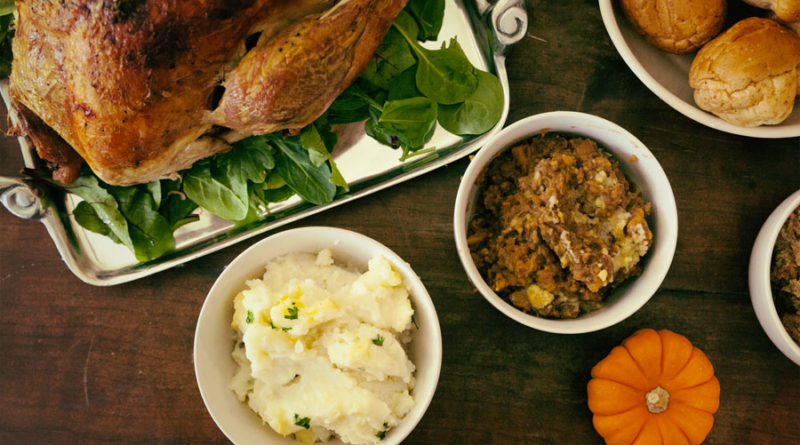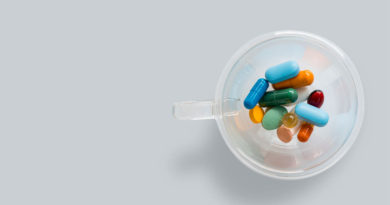How to Give Thanks and Not Overindulge
We often manifest gratitude for a lot of things during the holiday known as Thanksgiving. But to many, Thanksgiving is a time associated with a large meal and this means stuffing the belly with those special indulgences to the maximum. The truth is the average Thanksgiving meal contains about a staggering 3,000 calories.
Well, this may be so but you don’t really need to add a lot of calories to your body when enjoying a delectable traditional meal you probably have been eagerly waiting all year. The following are some helpful suggestions to help you enjoy your Thanksgiving meal without needing to suffer the consequences of excessive weight gain later on:
- Totally scrap or at least minimize high-fat foods: You can enjoy your favorite Thanksgiving dishes and also find ways to serve foods that are lower in calories. For example, instead of a creamy casserole, serve organic fresh beans sautéed with olive oil and garlic as a side dish. Instead of sour cream in your mashed potatoes, use Greek yogurt. In the turkey stuffing you can opt for low-sodium vegetable broth. For recipes that require higher-fat ingredients, you can use low-fat cheese and skim milk. Study your favorite recipes and see if you can replace them with healthier ingredients to lessen calories and still produce a lot of Thanksgiving flavor.
- Be mindful of what you drink: Thanksgiving drinks have a way of significantly increasing your calories more than food. So besides watching what foods to eat, you also need to watch what you drink. Select a small glass of red wine instead, if you want to toast with alcohol. Red wine is comparatively low in calories than sodas or fruit drinks and has antioxidants to boot. Refrain from drinking creamy or fruity cocktails that are loaded with sugar (and calories). To celebrate the holiday, drink water with lime or lemon, herbal spiced tea or, pure apple cider instead.
- Exercise just before thanksgiving: The holiday will allow you time to go out and exercise long before the much-awaited feast arrives. In the morning of the holiday you can participate in races and “Turkey trot” walks. Or you can just do some walking or biking around the neighborhood. It may be impossible to burn all the calories you have accumulated at dinner, but you at least can burn some of them.
- Eat lots of veggies first: You can begin thanksgiving dinner by eating lots of the health foods on the dinner table and leave some room in your stomach for the more appetizing rich foods later on. This will prevent you from overindulging in the richer foods and save you from putting in a ton of calories in one night. After eating your veggies, you can then feast on a low-fat, high protein turkey for a satiated belly and a well-rounded meal.
- Small is good: Use smaller plates instead of big-sized Thanksgiving platters. This will probably force your guests to return for seconds, but it will keep you from scooping too much on your plate and as a consequence, make you over eat.
- Abstain from eating leftovers: During thanksgiving, most families will cook foods that may take a couple or more days to finish. If you are a host to a thanksgiving dinner, you may want to purchase a few very affordable take-home containers for your guests and pack them as they are about to leave. If it’s just you and your family who’s celebrating, you may need to think about how much to make before you start preparing. Consider giving your leftovers to people without family nearby or to your elderly neighbors to make your thanksgiving day more meaningful.
- Sidestep tradition: On Thanksgiving, there are no specific rules on what you can and cannot eat. So if you follow a healthy lifestyle, you can avoid eating high-fat foods, carbohydrates, and sugary and alcoholic drinks during thanksgiving dinner. You can eat rice, vegetables, and fish, instead of the traditional turkey dinner. Rather than eating the high-caloric pumpkin pie for dessert, you can choose whipped cream and fresh instead. Customize your menu to accommodate the foods you choose to eat and not the meal that’s traditionally served for the occasion.
- Select your food wisely: If you are to add more calories in your body, make sure they count. If you can’t resist your mother’s home-cooked sweet potato casserole recipe but could leave out her green bean casserole, then just opt for the former.
- Avoid eating everything in your plate if you know you’re full: When your mind and belly are telling you that you are full to the brim, then stop eating even if you have some food still left on your plate. Hopefully, there won’t be much food to throw away. Instead of shoveling chunks of food in your mouth like a starving Viking, savor each bite. This way, you will be able to experience the fullness and pleasure of every food you bite.
- Clean up after dinner: After the meal is done, don’t leave the food on the table. The mouth-watering aroma and sight of the food will only compel you to continue eating and add more to your calories. After properly enjoying a Thanksgiving meal, clean up and stay away from the kitchen.
Share the excitement, energy and the feelings of gratitude that thanksgiving brings towards family, friends, and others.
HAPPY THANKSGIVING!



